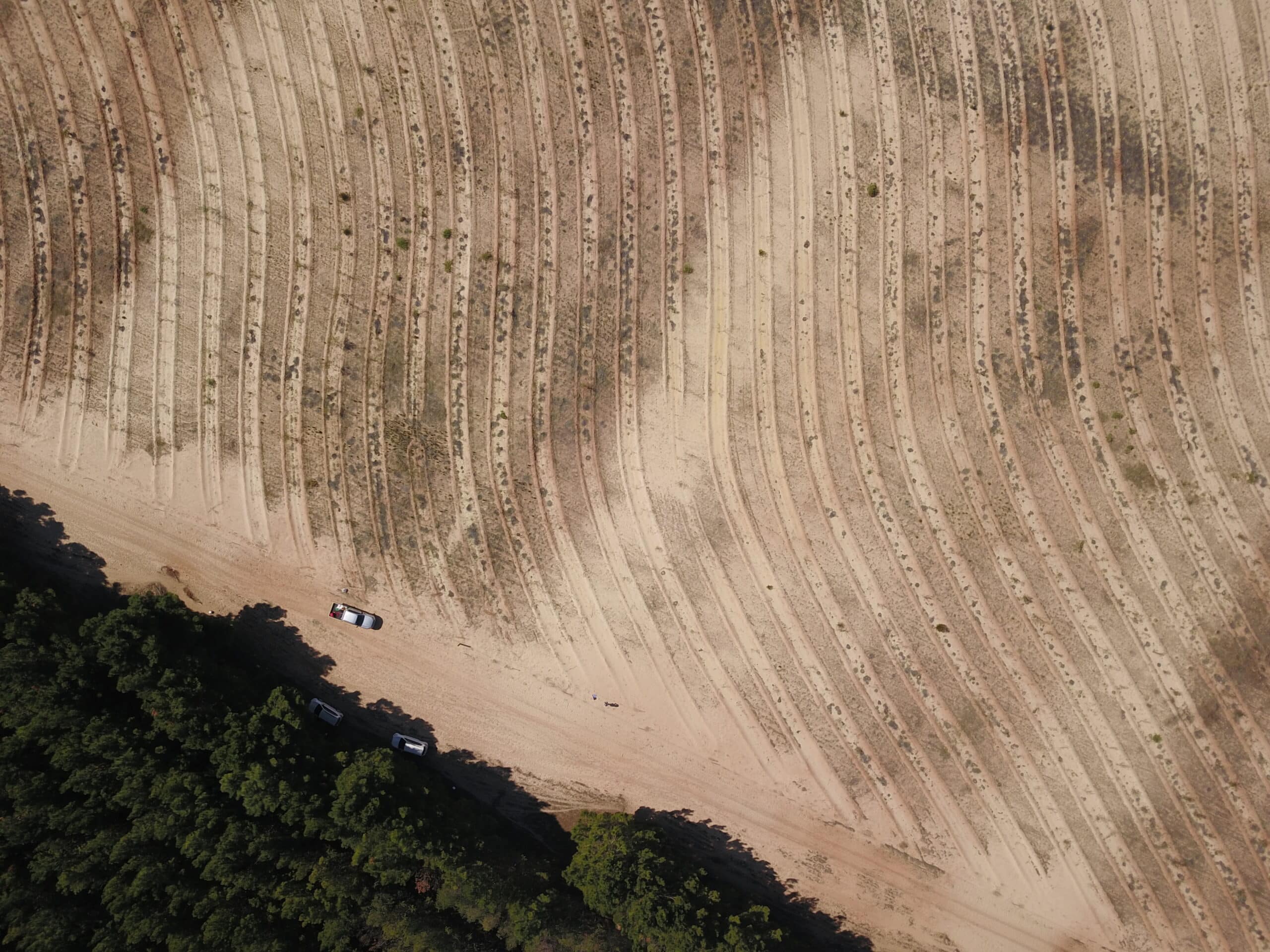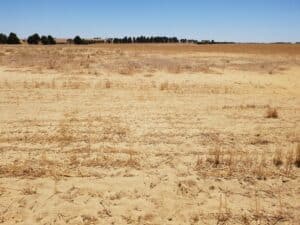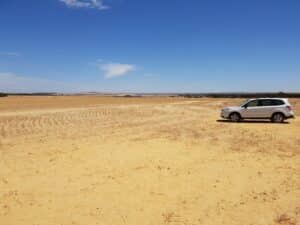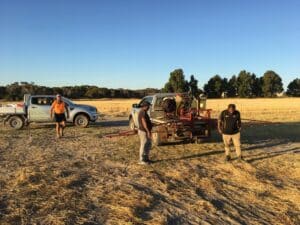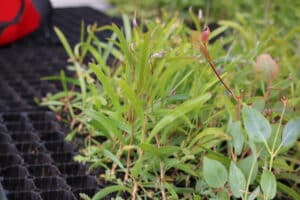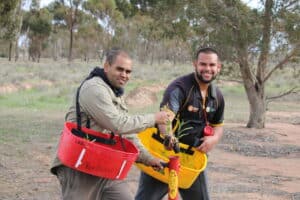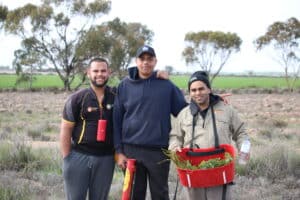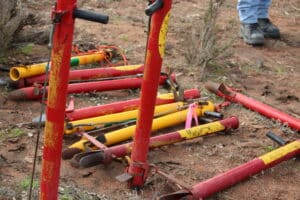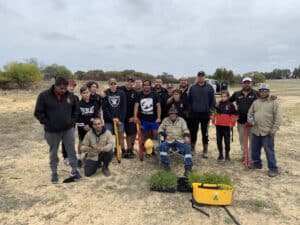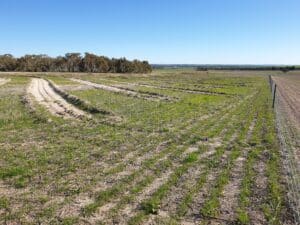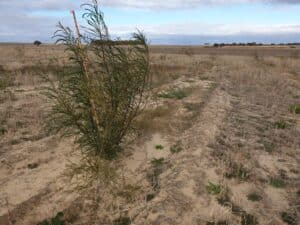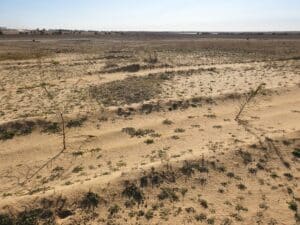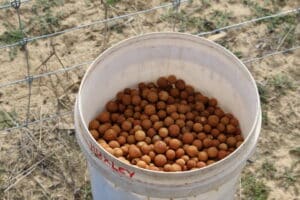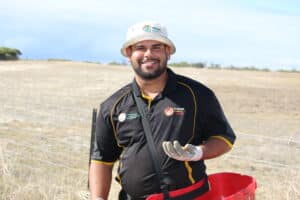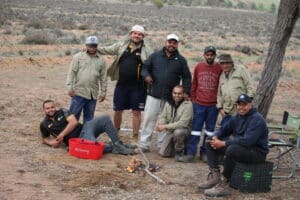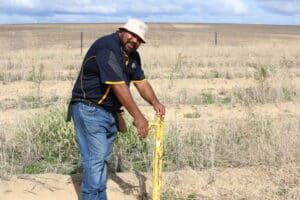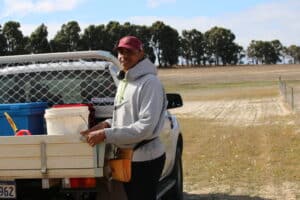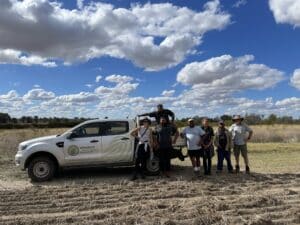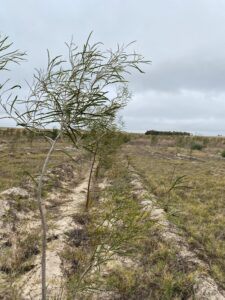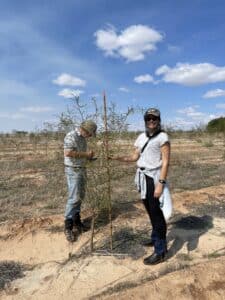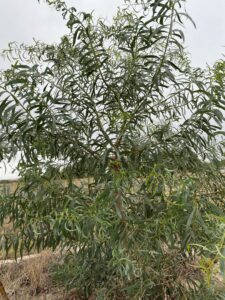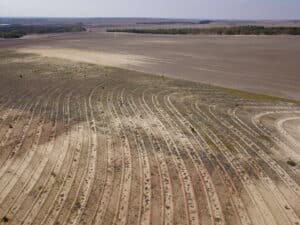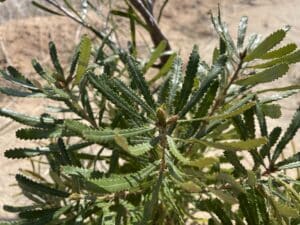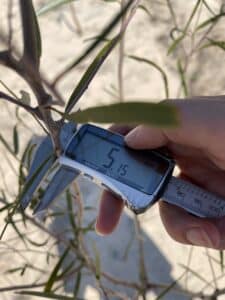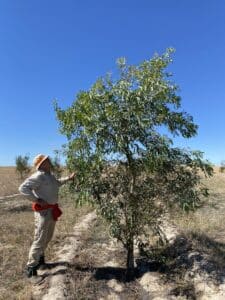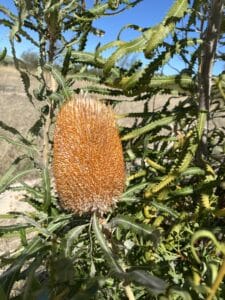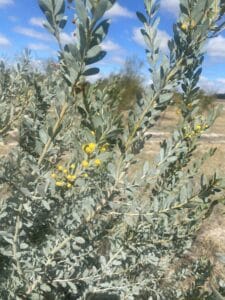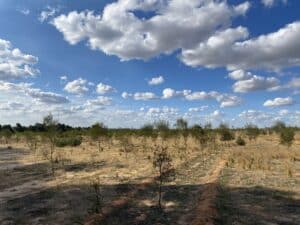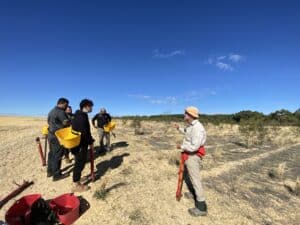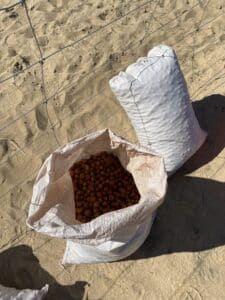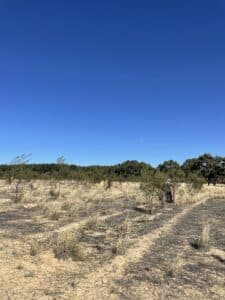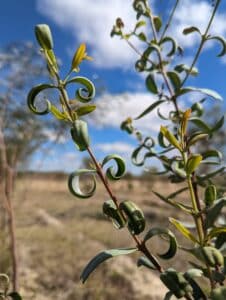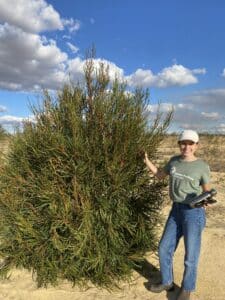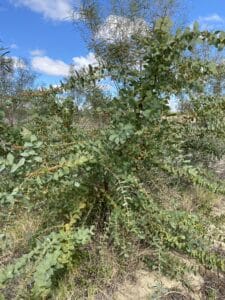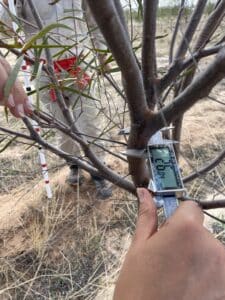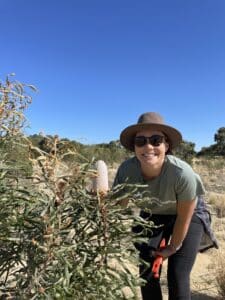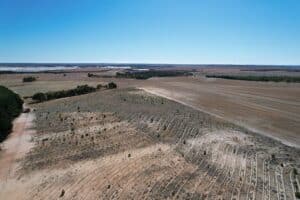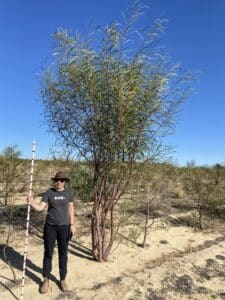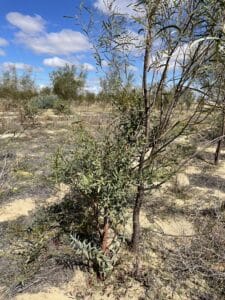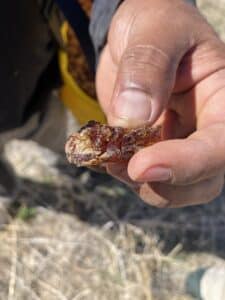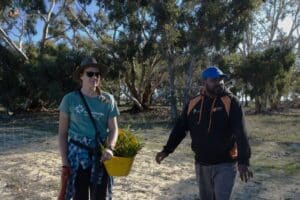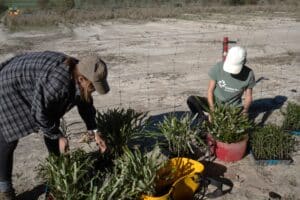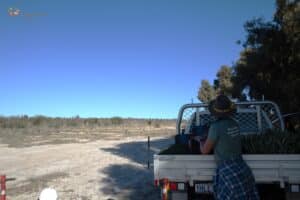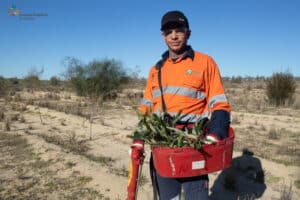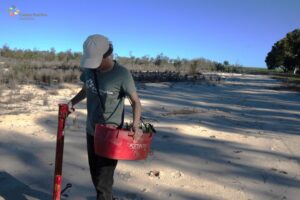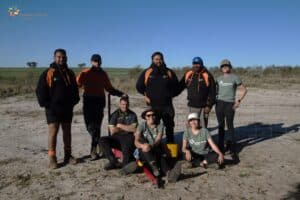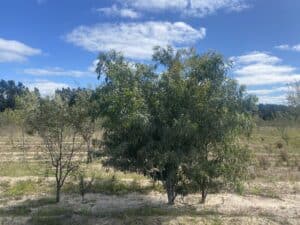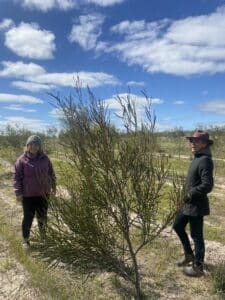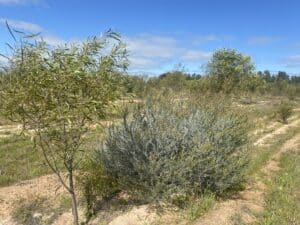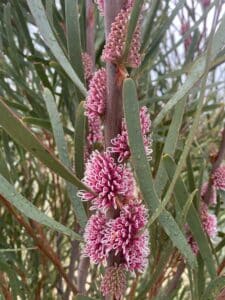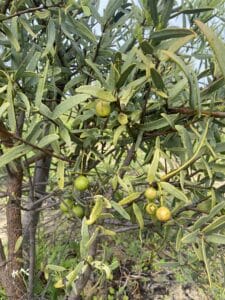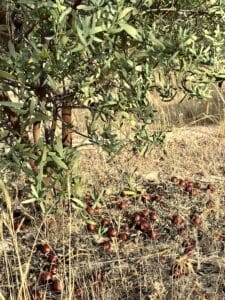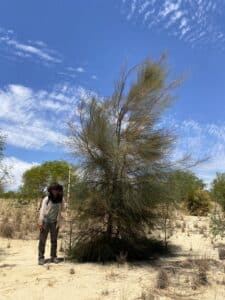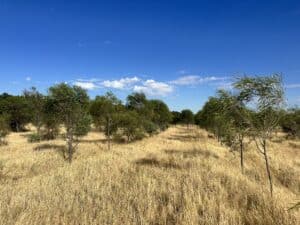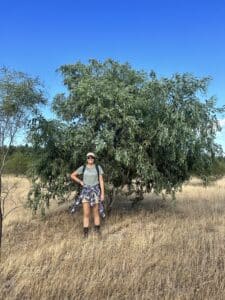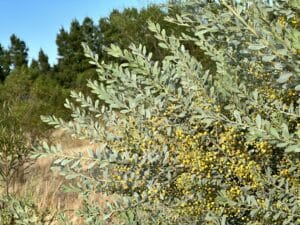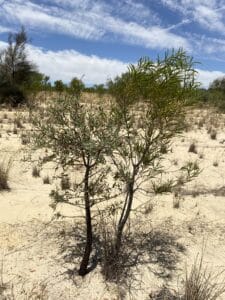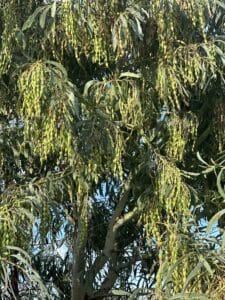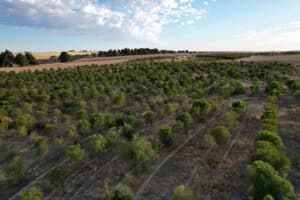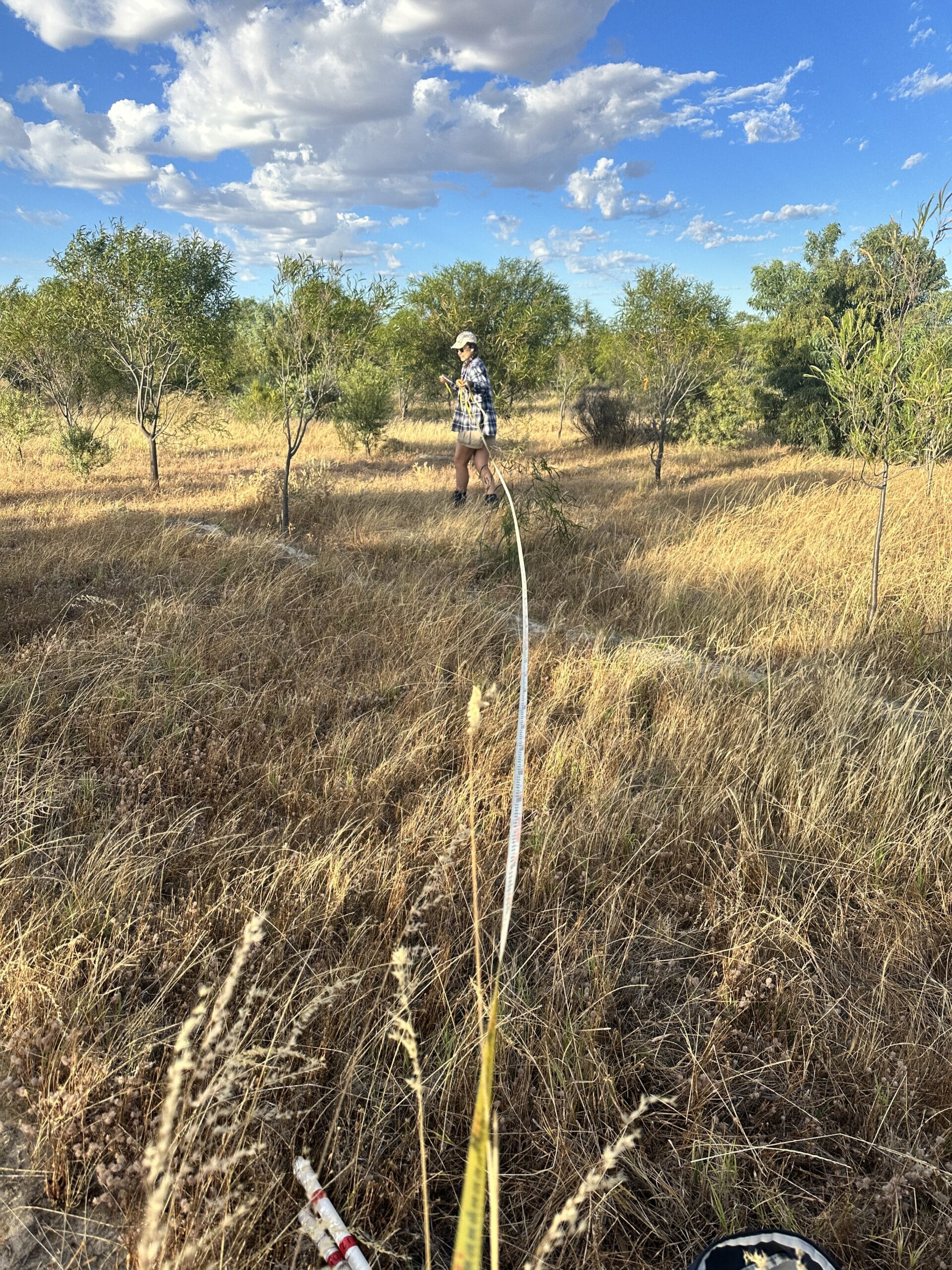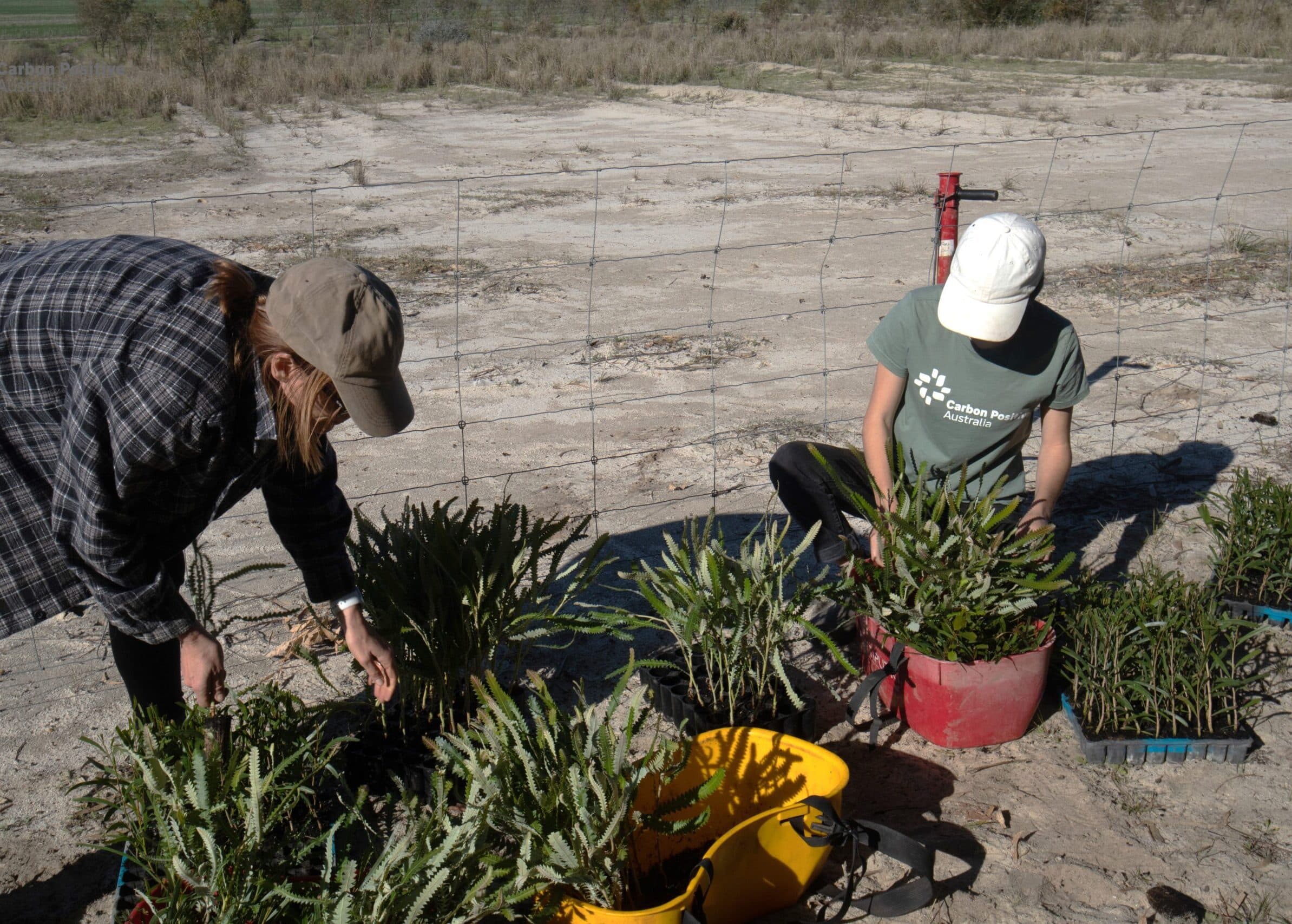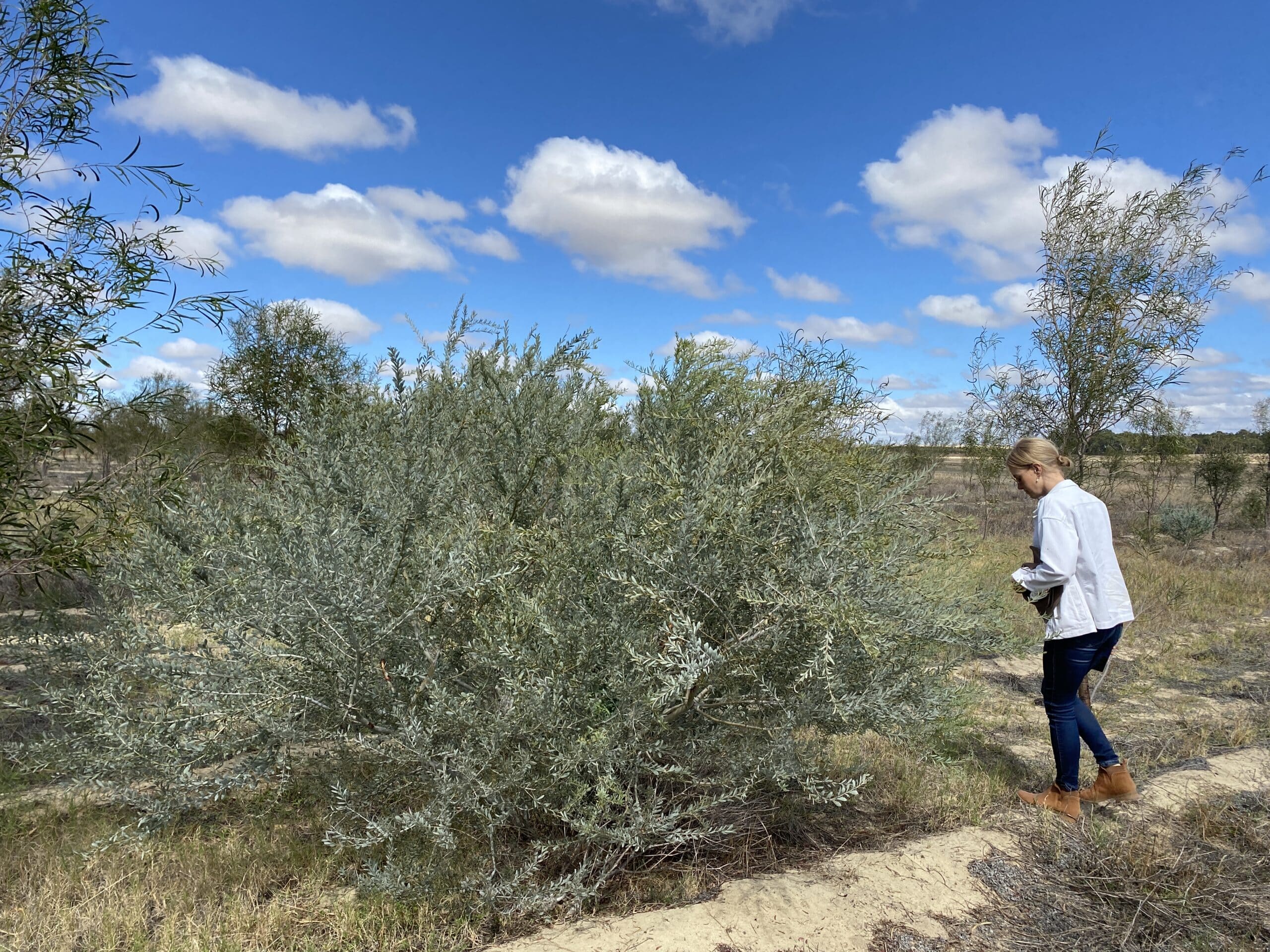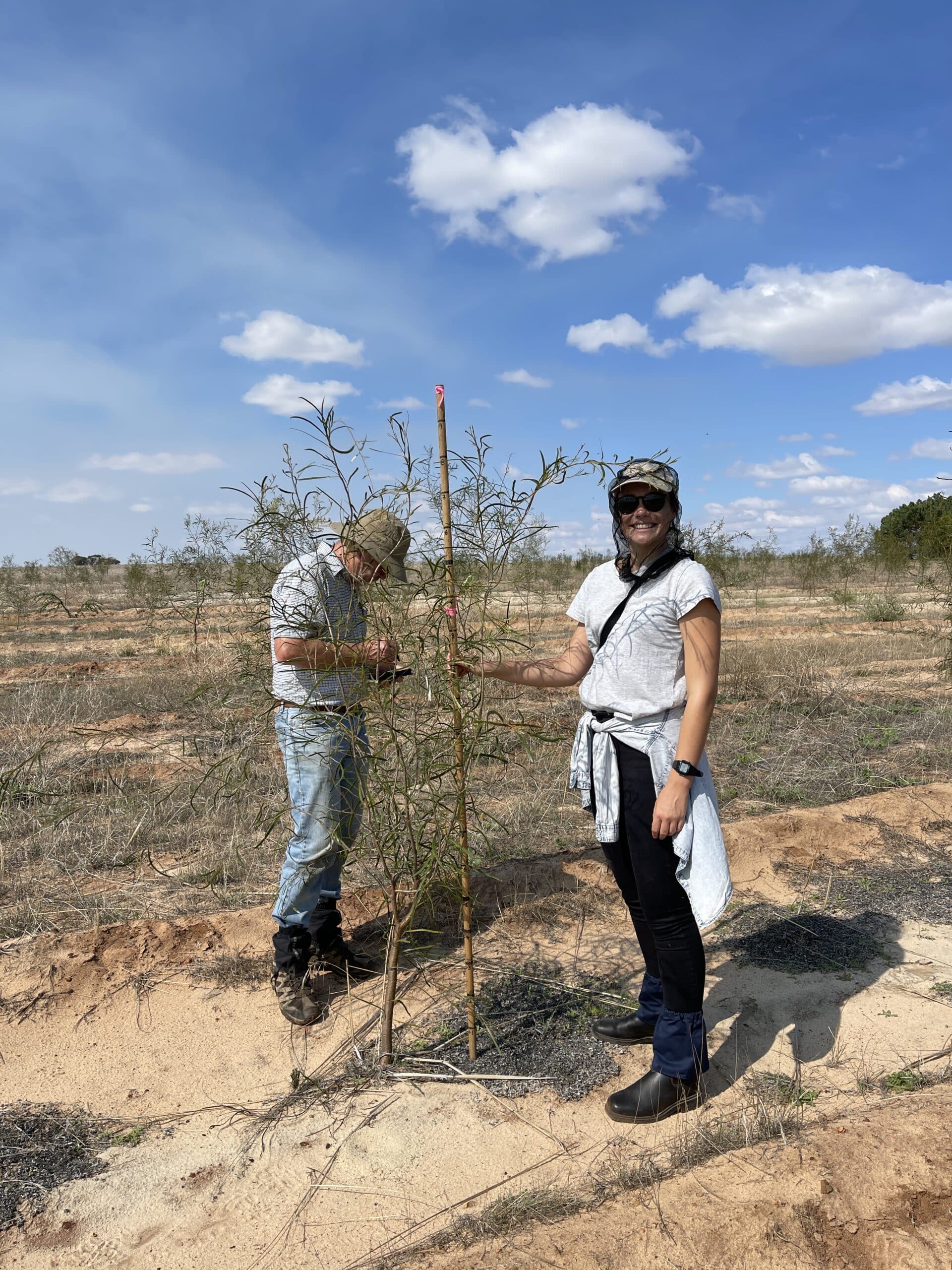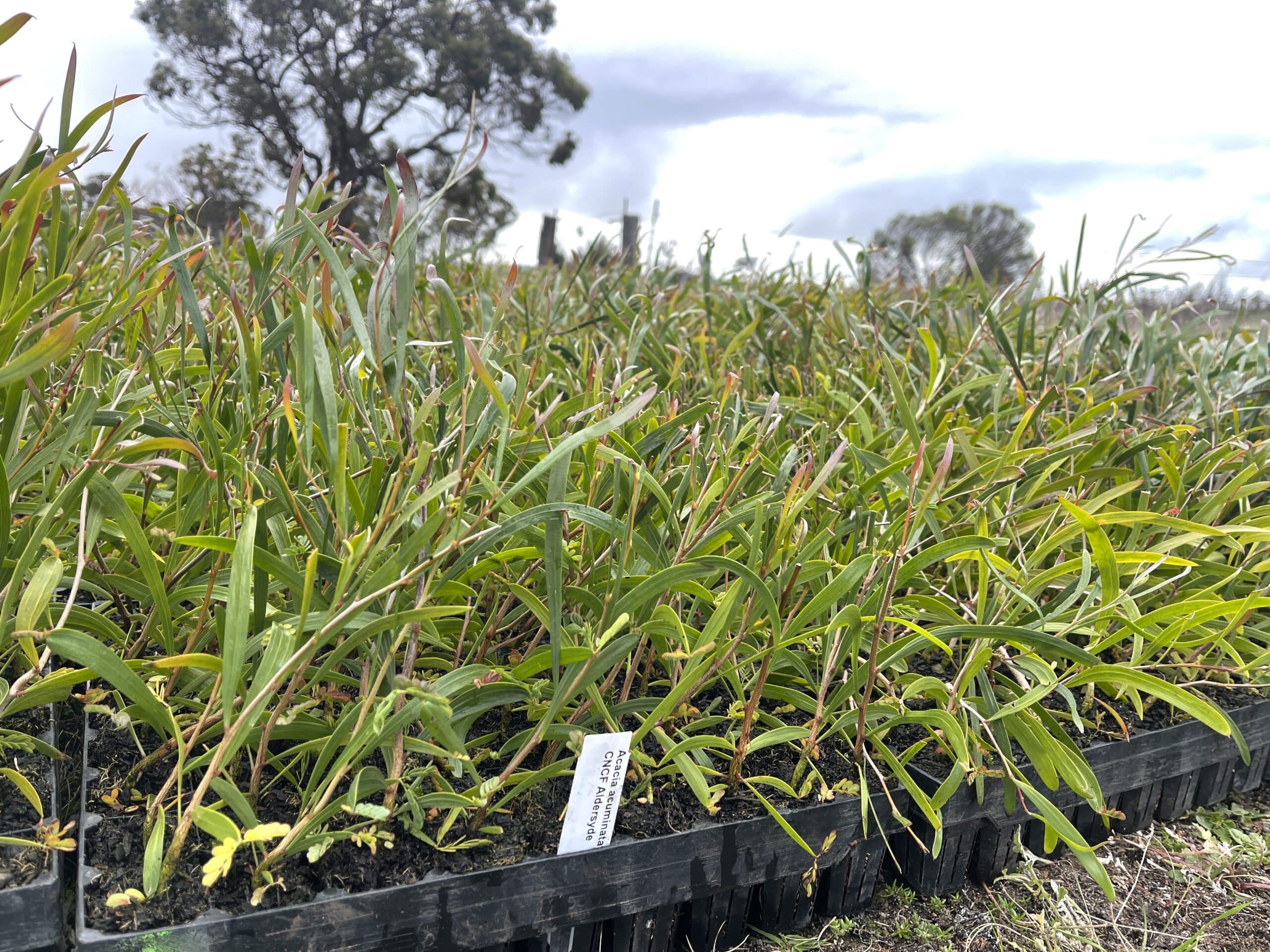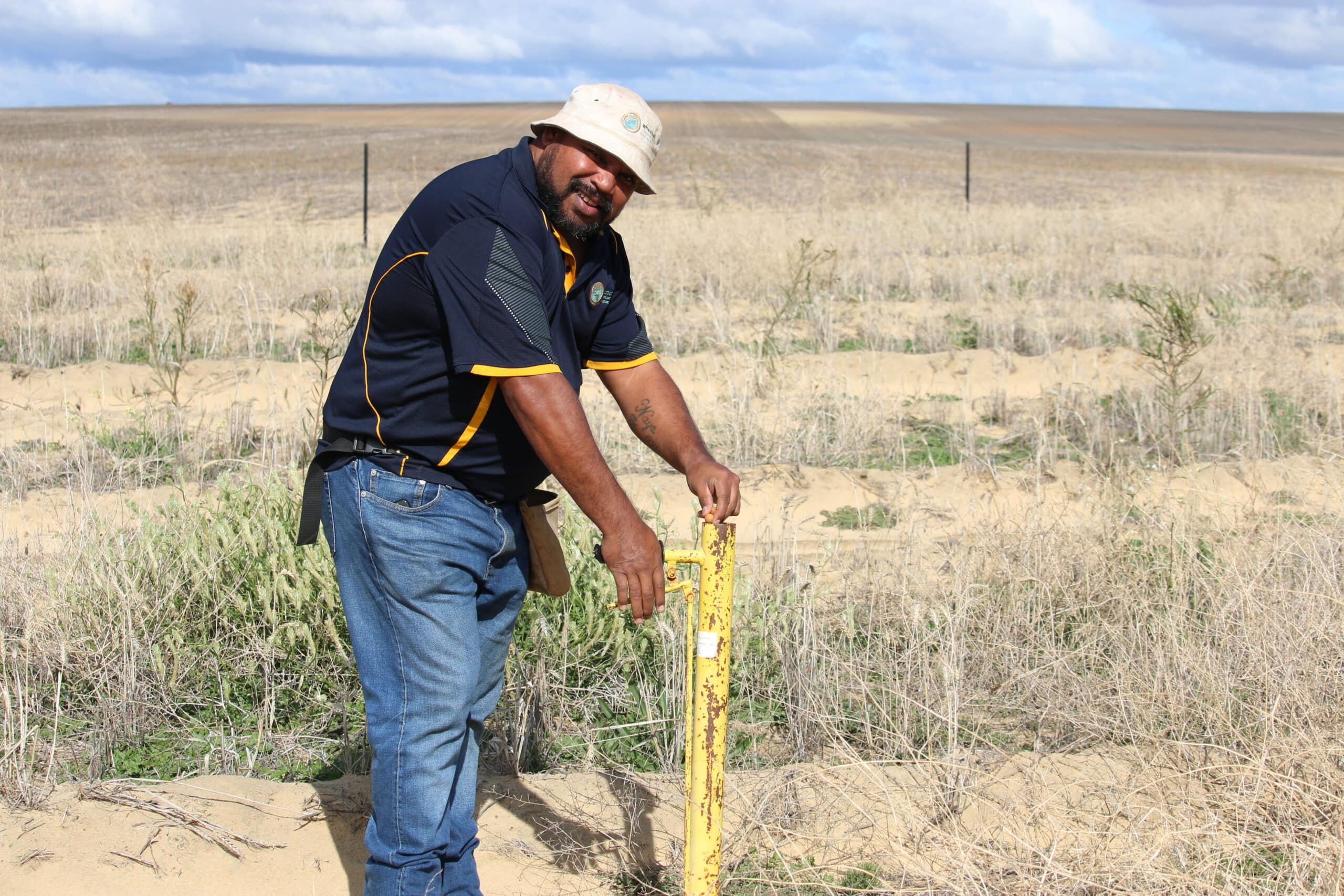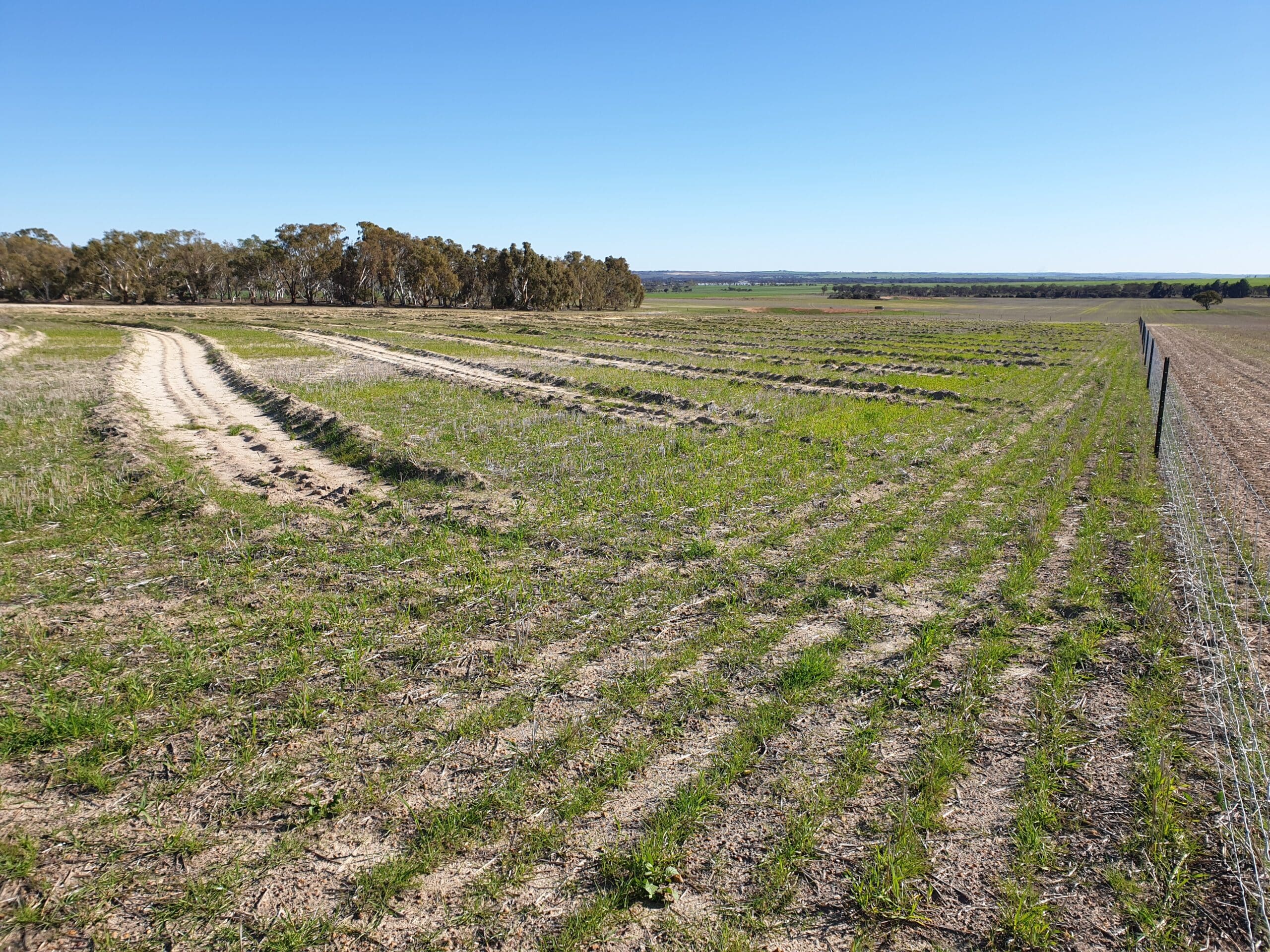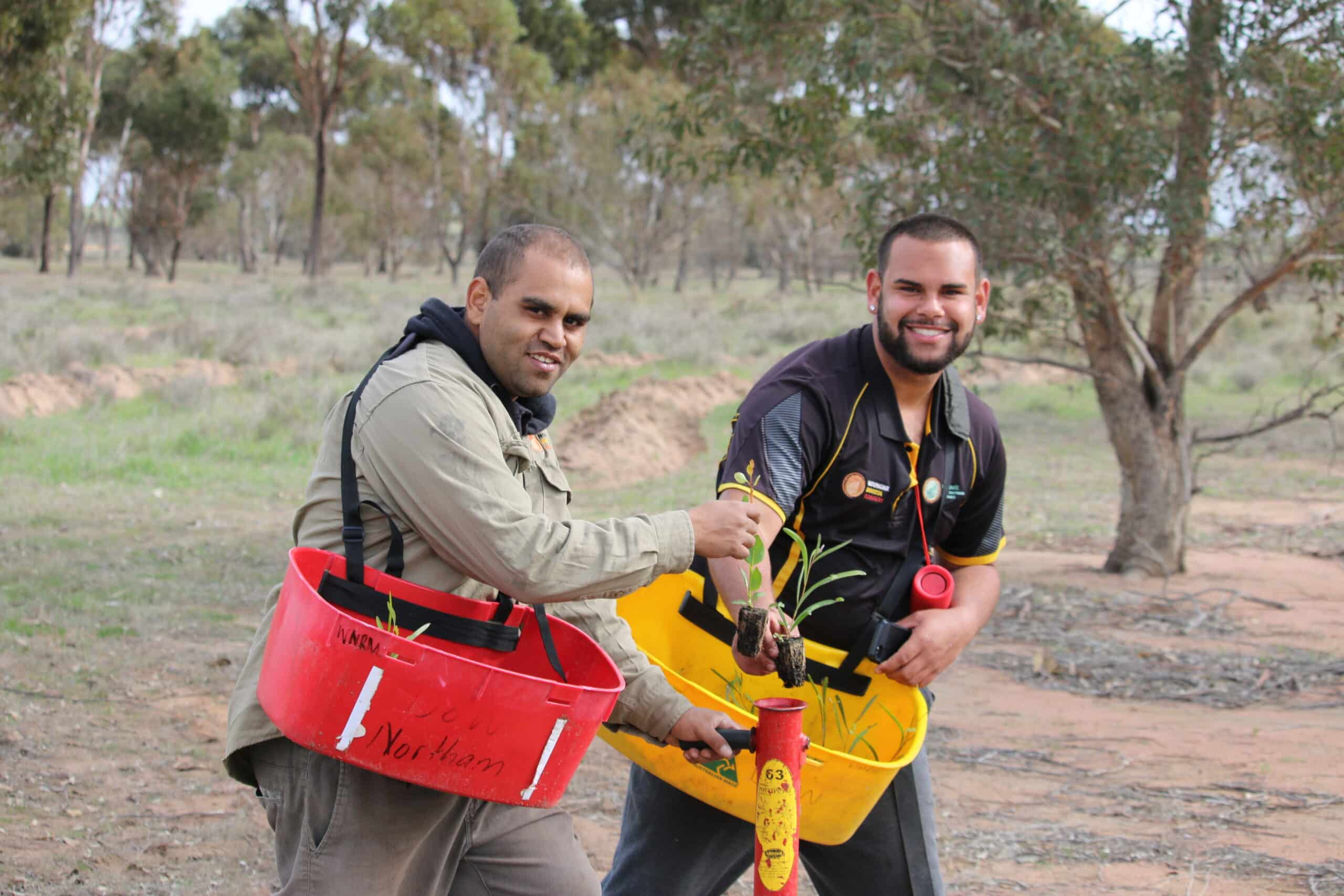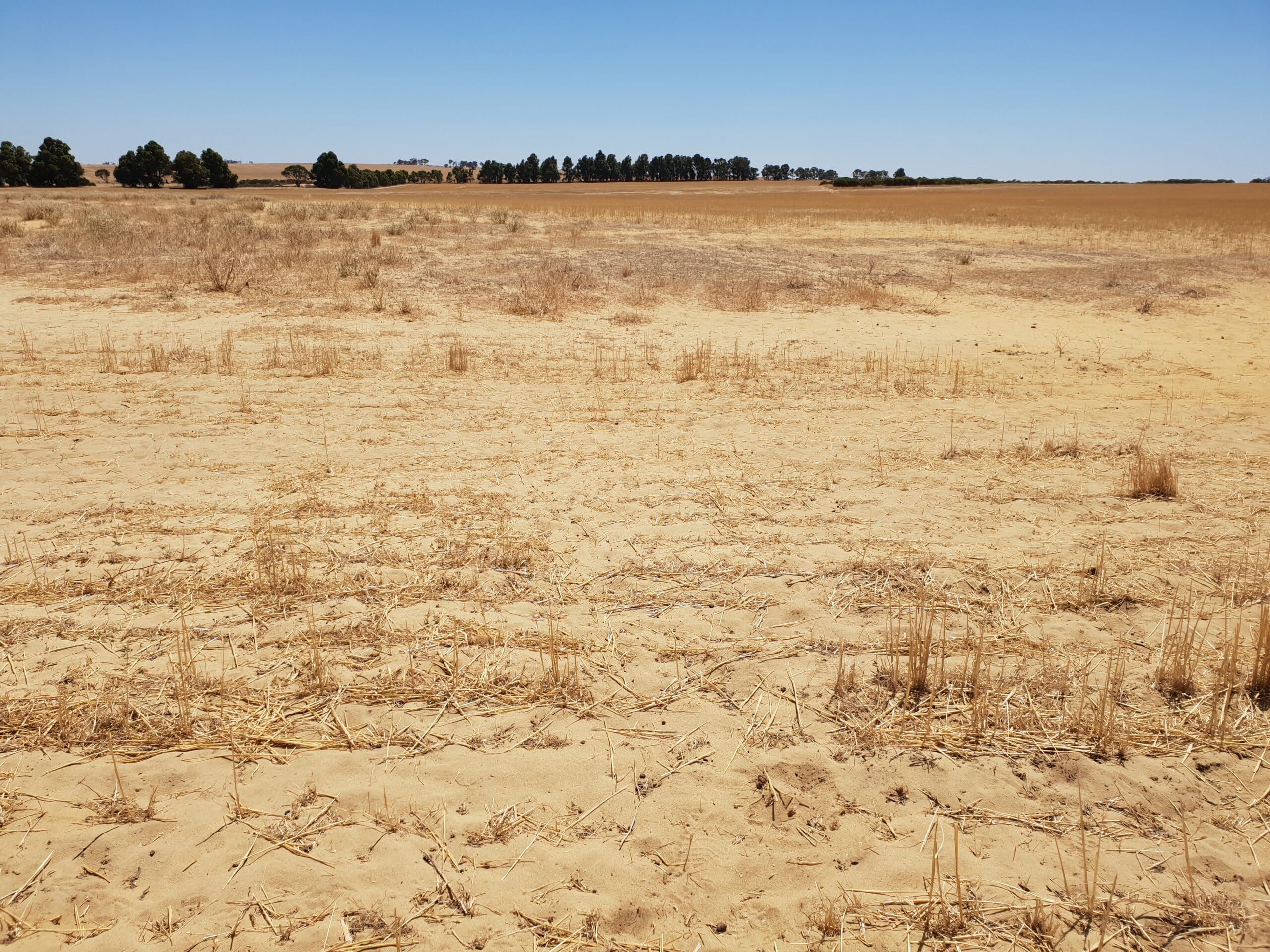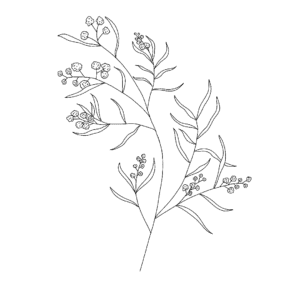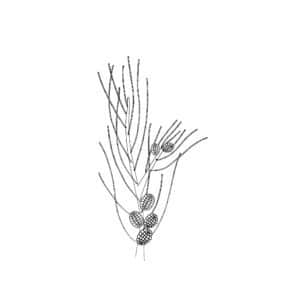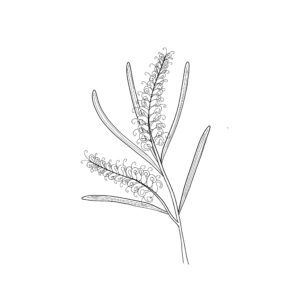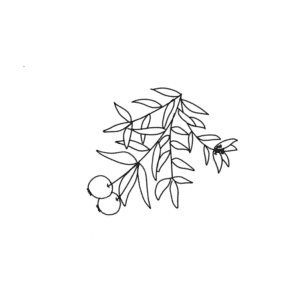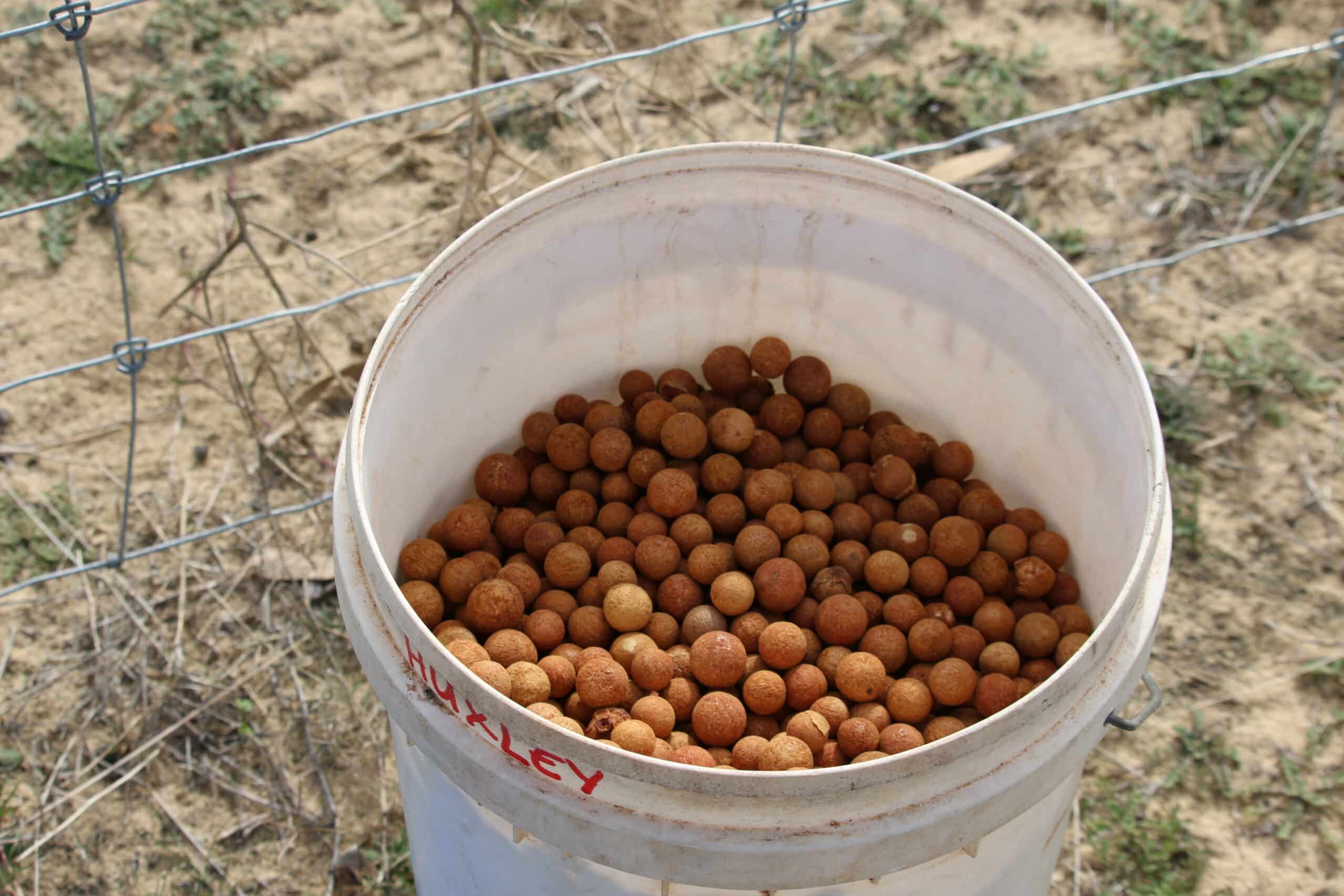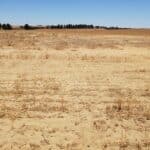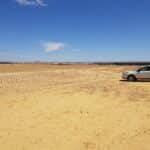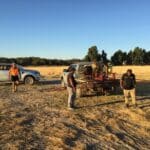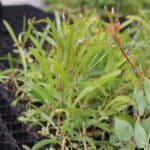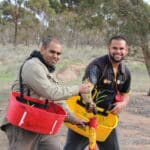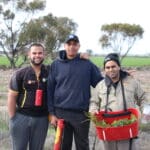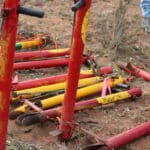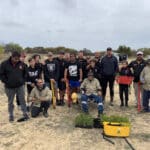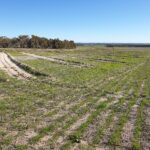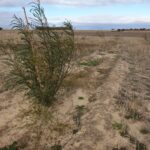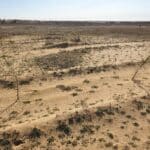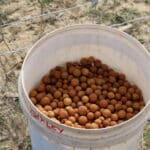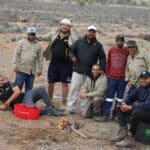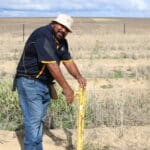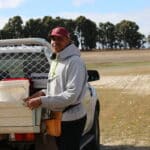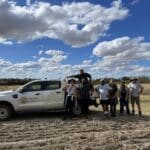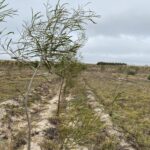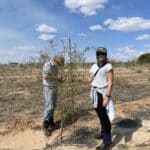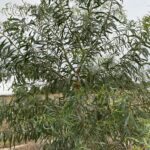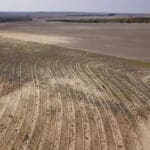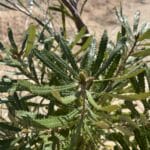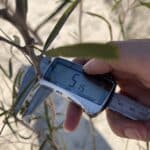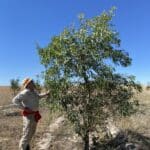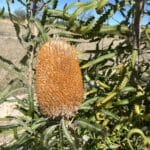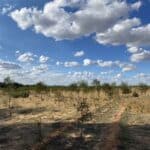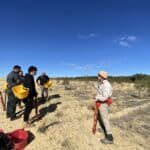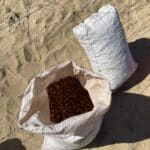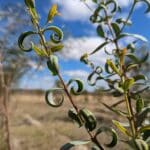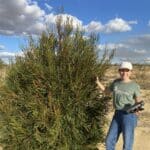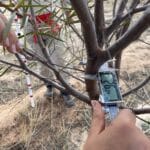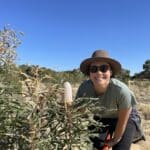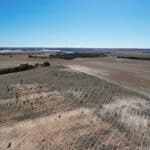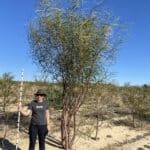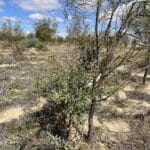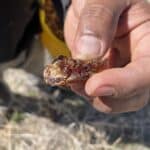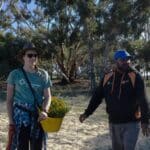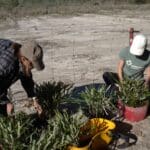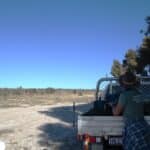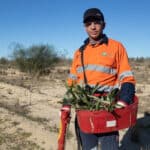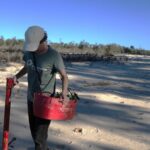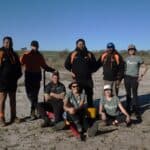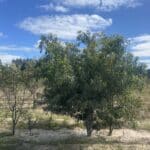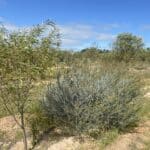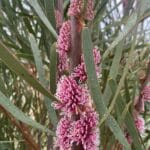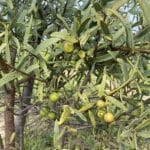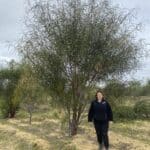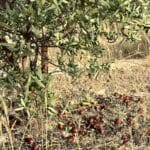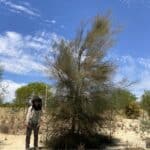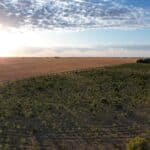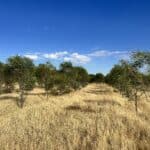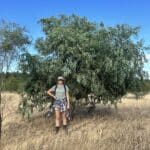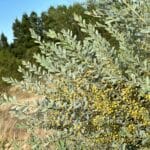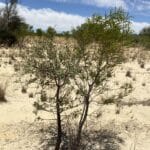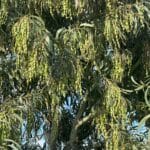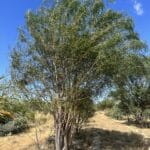![Cleared area of land with sandy yellow soil]()
Initial site prior to planting.
![Cleared area of flat land with sandy yellow soil and silver car]()
Initial site prior to planting.
![three men standing next to two utes with planting preparation equipment]()
Wheatbelt NRM Noongar Budjar Rangers Brad, Darryl and Tom conducting weed control.
![Close up of seedlings in seedling tray]()
Acacia and Eucalyptus seedlings ready to be planted.
![Two men smiling whilst walking with seedlings bucket and placing seedlings in a pottiputki]()
Thomas and Mainey (Noongar Budjar Rangers) planting Acacia seedlings.
![Three men standing and posing for a photo with seedling buckets and planting equipment]()
Mainey, Tarkyn and Thomas from the Noongar Budjar Rangers on planting day.
![Pottiputki planting equipment]()
Pottiputki planting tools used for planting.
![Group photo with planting equipment]()
The Noongar Budjar Ranger team.
![Ripped planting rows ready for planting.]()
Survival counts during November 2019.
![Acacia shrub growing in planting row]()
Healthy Acacia shrub during Autumn monitoring 2020.
![Plants growing in planting row in sandy soil]()
Monitoring in Autumn 2020.
![A bucket of Sandalwood (Santalum spicatum) seeds de-husked and ready to be sown.]()
A bucket of Sandalwood (Santalum spicatum) seeds de-husked and ready to be sown.
![Man smiling with seedling bucket]()
Mainey from the Noongar Budjar Rangers with a handful of sandalwood seeds.
![Group photo with planting equipment]()
Bomber, Tarkyn, Joyce, Mainey, Tommy and Darryl having a tea break during planting.
![Man smiling whilst planting a seedling into a planting row with a pottiputki]()
Bomber using a pottputki planting device to plant sandalwood seeds.
![Man standing next to ute tray placing seedlings in seedling bucket]()
Tarkyn Narrier collecting sandalwood seeds from the back of the ute.
![Group photo of planting team next to a ute.]()
Jess (CPOZ), Mainey, Mark, Bomber, Joyce, Darryl and Peter (FarmWoods) during monitoring and sandalwood infill 2021.
![Trees growing in planting row]()
The planting site showing good progress two years on from planting.
![Women smiling next to an Acacia acuminata plant holding a measuring stick with a man behind the plant looking down at a phone in his hand]()
Jess and Dr Peter Ritson measuring the height of an Acacia acuminata.
![Close up of an Acacia microbotrya ('Manna wattle')]()
A healthy Acacia microbotrya (‘Manna wattle’).
![Aerial view of some of the planting rows.]()
Aerial view of some of the planting rows.
![Juvenile Banksia prionotes ('Acorn banksia')]()
Juvenile Banksia prionotes (‘Acorn banksia’) germinated from seed planted in 2019.
![Measuring the stem diameter of a juvenile Acacia acuminata ('Jam wattle').]()
Measuring the stem diameter of a juvenile Acacia acuminata (‘Jam wattle’).
![Man standing next to and look up at an Acacia microbotrya ('Manna wattle').]()
Dr Peter Ritson standing next to a tall Acacia microbotrya (‘Manna wattle’).
![Beautiful flowering Banksia prionotes ('Acorn banksia').]()
Beautiful flowering Banksia prionotes (‘Acorn banksia’).
![Acacia meisneri ('Blue wattle') beginning to flower.]()
Acacia meisneri (‘Blue wattle’) beginning to flower.
![Planting rows of Acacia species and Santalum spicatum ('Sandalwood').]()
Planting rows of Acacia species and Santalum spicatum (‘Sandalwood’).
![Man giving instructions to planting team with planting equipment]()
Dr Peter Ritson and the Noongar Budjar Rangers preparing to plant sandalwood seeds.
![Two bags of Sandalwood seeds for planting.]()
Sandalwood seeds for planting.
![People planting seedlings in planting rows]()
Noongar Budjar Rangers planting sandalwood seeds next to Jam wattle hosts.
![close up of curled sandalwood (Santalum spicatum) leaves.]()
Curled sandalwood (Santalum spicatum) leaves.
![Woman smiling and standing next to a large Hakea multilineata ('Grass-leaved hakea').]()
Ebony (CPOZ) standing next to a large Hakea multilineata (‘Grass-leaved hakea’).
![Thriving Hakea prostrata ('Harsh hakea').]()
Thriving Hakea prostrata (‘Harsh hakea’).
![Measuring the width of an Acacia acuminata ('Jam wattle') stem with a DBH measurer.]()
Measuring the width of an Acacia acuminata (‘Jam wattle’) stem.
![Girl smiling next to a flowering Banksia prionotes ('Acorn banksia').]()
Jess (CPOZ) with a flowering Banksia prionotes (‘Acorn banksia’).
![Drone image of planting rows]()
One of the sandalwood planting areas.
![Woman smiling and standing next to an Acacia lasiocalyx ('Shaggy wattle').]()
Ches (CPOZ) next to a very tall Acacia lasiocalyx (‘Shaggy wattle’).
![Juvenile sandalwood next to an established Acacia acuminata ('Jam wattle') host.]()
Juvenile sandalwood next to an established Acacia acuminata (‘Jam wattle’) host.
![hand holding a Jam wattle gum]()
Jam wattle gum, traditionally used by Noongar people as a lolly and to treat ailments.
![Two people standing with planting equipment]()
Jess (CPOZ) and Bomber (Noongar Budjar Rangers) deciding which areas to infill.
![two women organising seedlings into seedlings buckets]()
Catherine (CPOZ) and Ebony (CPOZ) collecting Banksia and Acacia seedlings for planting.
![Woman standing with back to camera facing ute tray to fill seedlings buckets]()
Jess (CPOZ) collecting seedlings next to the sandalwood infill area.
![Man standing with planting equipment and full seedling bucket]()
Lance (Noongar Budjar Rangers) with a bucket full of Banksia seedlings.
![Woman walking along planting seedlings with planting equipment and full seedling bucket]()
Ebony (CPOZ) using the pottiputki to plant seedlings.
![Group photo of planting team standing and sitting on the ground with planting equipment]()
The planting team.
![Established Acacia microbotrya ('Manna wattle') growing in planting rows]()
Impressive Acacia microbotrya (‘Manna wattle’).
![Two women standing next to an impressive Hakea multilineata ('Grass leaved hakea').]()
Louise (CPOZ) and Pollyanna (CPOZ) standing next to an impressive Hakea multilineata (‘Grass leaved hakea’).
![Established trees growing in planting rows]()
Great growth and plant establishment in the planting rows.
![close up of aHakea multilineata ('grass-leaved hakea') in bloom.]()
Hakea multilineata (‘grass-leaved hakea’) in bloom.
![Fruiting sandalwood (Santalum spicatum).]()
Fruiting sandalwood (Santalum spicatum).
![Woman standing next to an Acacia lasiocalyx ('Shaggy wattle')]()
Louise (CPOZ) standing next to an Acacia lasiocalyx (‘Shaggy wattle’).
![Close up of sandalwod (Santalum spicatum) tree with fallen sandalwood nuts on the ground]()
Fallen sandalwood nuts.
![Women with fly net and measuring stick standing next to an Allocasuraina huegeliana ('rock sheoak').]()
Liv (CPOZ) next to a very tall Allocasuraina huegeliana (‘rock sheoak’).
![Drone image of planting area with cropping paddock in background]()
Aerial view of part of the planting area.
![Large established trees growing in planting rows]()
Part of the planting area showing great growth and establishment.
![Women staning next to an Acacia microbotrya ('Manna wattle')]()
Jess (CPOZ) standing next to an impressively tall Acacia microbotrya (‘Manna wattle’).
![close up of a flowering Acacia meisneri]()
Flowering Acacia meisneri (‘Blue wattle’).
![Sandalwood (Santalum spicatum) growing next to an Jam wattle (Acacia acuminata)]()
Little sandalwood tree growing next to its host, an Acacia acuminata.
![Very healthy Acacia microbotrya ('Manna wattle') covered in seed pods.]()
Very healthy Acacia microbotrya (‘Manna wattle’) covered in seed pods.
![Drone image of planting area.]()
Aerial view of the planting area during 2023 monitoring.
![Acacia lasiocalyx ('Shaggy wattle')]()
An Acacia lasiocalyx (‘Shaggy wattle’) standing tall and proud.
